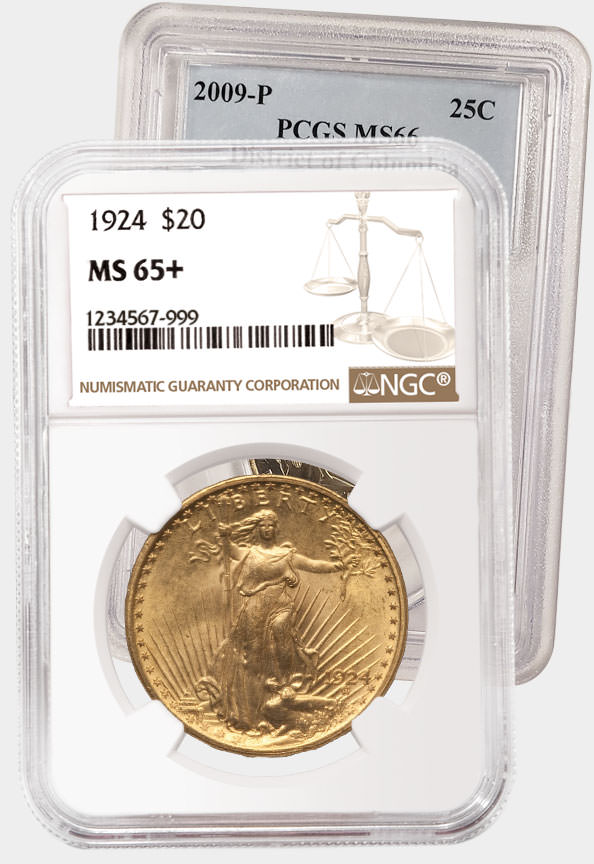Counterfeit Detection: Stock Reverses - Counterfeit Indian Half Eagles
Posted on 15/02/2011
Many counterfeits, especially gold coins, were struck from stock dies, which were reused on multiple issues. A counterfeiter saved time and money by using one die, such as the reverse, over and over, while swapping out the obverse to change the date. The edge was also frequently struck from a stock die and many counterfeits can be identified solely from the repeating issues seen on this often-overlooked “third side.” Researchers have already identified a number of stock dies and more continue to be found.
 |
 |
Genuine (Left) and Counterfeit (Right) Comparison |
NGC receives countless fakes struck from stock dies, and one of the most commonly seen is a reverse used on Indian Head half eagles. The most obvious problem with this reverse die is the wrong mintmark: the S should have bulbous and square-shaped serifs, but on these fakes the top and bottom of the S are elongated with indistinct serifs. Fakes are often purposely abraded or cleaned to disguise the fact that it is counterfeit, so some of the other minor characteristics of this reverse may not be visible on all specimens. The mintmark, however, is a dead giveaway, and collectors should try to familiarize themselves with the style of mintmarks on genuine coins. Auction records, specialist books, and the Cherrypickers’ Guide to Rare Die Varieties are particularly useful for mintmark studies.
Indian Head half eagles (as well as their quarter eagle counterparts) are among the most difficult coins to distinguish genuine specimens and counterfeits. Nonetheless, when a number of coins exhibit the same flaws the task is made much easier. Armed with some basic knowledge about stock dies and mintmark styles a collector can avoid some of these frequently encountered fakes.
Stay Informed
Want news like this delivered to your inbox once a month? Subscribe to the free NGC eNewsletter today!
_tb1.jpg)
_tb1.jpg)
_tb1.jpg)
_tb1.jpg)
_tb1.jpg)
_tb1.jpg)
_tb1.jpg)
_tb1.jpg)
